How To Train A Shiba Inu Not To Run Away: Helps & Guide
Introduction:
Welcome to the adventure of raising a Shiba Inu! These spirited and independent dogs bring immense joy, but their curious nature might lead them astray. One common challenge Shiba Inu owners face is preventing their furry friends from running away. This guide is here to help you build a strong connection with your Shiba Inu, teaching them essential commands to ensure they stay close.
By understanding their behavior and employing positive reinforcement techniques, you can create a safe and loving environment, strengthening the bond between you and your adventurous companion. Let’s embark on this journey together to keep your Shiba Inu happily by your side!

Understanding Shiba Inu Behavior
- Independent Nature:
- Shiba Inus are renowned for their self-sufficiency and independent mindset.
- They appreciate personal space and often display a sense of self-reliance.
- Acknowledge and respect their need for independence to build a foundation for effective training.
- Curiosity and Adventurous Instincts:
- Curiosity is a defining trait in Shiba Inus; they have an inherent desire to explore their surroundings.
- Their adventurous instincts can lead to impromptu escapades if not properly addressed.
- Recognize and embrace their inquisitive nature while channeling it into controlled and supervised exploration.
- Common Triggers for Running Away:
- Shiba Inus may react to various stimuli, including unfamiliar sounds, scents, or the presence of other animals.
- Identifying specific triggers is crucial to tailoring your training approach.
- Understanding what prompts their desire to run away allows you to create a secure environment and implement targeted training.
Building a Strong Foundation
- Establishing Trust Through Positive Reinforcement:
- Introduce treats and rewards to create positive associations with desired behaviors.
- Utilize enthusiastic praise and gentle petting to reinforce good conduct.
- Build a bond based on trust, where your Shiba Inu associates obedience with positive experiences.
- Consistent Training Schedule:
- Set a regular training routine to provide structure and predictability.
- Short, frequent sessions are more effective than lengthy, sporadic ones.
- Consistency builds a sense of security and helps your Shiba Inu understand expectations.
- Creating a Safe and Stimulating Environment:
- Remove potential hazards from your home and yard to ensure a safe training space.
- Provide engaging toys and activities to channel your Shiba Inu’s energy positively.
- A secure and stimulating environment reduces the likelihood of them seeking adventure outside the designated area.
Basic Commands for Recall
- Teaching the “Come” Command:
- Start Indoors: Begin in a quiet space with minimal distractions.
- Use Treats: Associate the command with positive reinforcement by rewarding with treats.
- Gradual Progression: Move to more challenging environments, reinforcing the command as you go.
- Incorporating Leash Training:
- Choosing the Right Leash and Collar: Select comfortable equipment suitable for your Shiba Inu’s size and temperament.
- Positive Leash Experiences: Make leash time enjoyable, associating it with walks and exploration.
- Controlled Environments: Practice in secure areas before attempting in more distracting locations.
- Building Distraction Resilience:
- Incremental Challenges: Gradually expose your Shiba Inu to distractions during recall training.
- Consistent Rewards: Maintain a reward system for successful responses, reinforcing the behavior.
- Patience is Key: Be patient as your Shiba Inu learns to focus on you amidst various stimuli.
Identifying and Addressing Triggers
- Recognizing Common Triggers:
- Unfamiliar Sounds: Shiba Inus may be sensitive to new or sudden noises.
- Strange Scents: They can be intrigued by unfamiliar smells, prompting exploration.
- Presence of Other Animals: The sight or scent of other animals may trigger their instinct to roam.
- Implementing Desensitization Techniques:
- Gradual Exposure: Introduce triggers in controlled environments to reduce sensitivity.
- Positive Associations: Associate triggers with positive experiences, like treats or play.
- Incremental Challenges: Gradually expose your Shiba Inu to increasing levels of the trigger, building tolerance.
- Counter-Conditioning to Change Reactions:
- Positive Reinforcement: Reward calm behavior when exposed to triggers.
- Redirect Attention: Teach your Shiba Inu to focus on you when a trigger is present.
- Consistency is Key: Repeat the process consistently to reshape their response to potential triggers.
Consistency is Key
Why Consistency Matters:
- Predictability Breeds Confidence: Shibas, with their keen observation skills, learn best when they know what to expect. Consistent routines, commands, and training methods eliminate confusion and empower them to make positive choices.
- Trust Built Brick by Brick: Each repetition of a command, each reward for desired behavior, lays another brick in the foundation of trust. Consistency shows your Shiba they can rely on you, leading to a stronger bond and greater cooperation.
- Unbreakable Boundaries: Establishing consistent rules and boundaries for acceptable behavior creates a safe and predictable environment for your Shiba. Knowing what’s expected eliminates anxiety and frustration, fostering better impulse control and overall well-being.
Putting Consistency into Practice:
- Training Times: Dedicate regular times for training sessions, both indoors and outdoors. Consistency in timing reinforces the importance of learning and creates a dedicated space for growth.
- Command Clarity: Use clear, consistent vocabulary for commands like “Come,” “Leave It,” and “Stay.” Avoid variations or pet names, as this can confuse your Shiba and hinder their understanding.
- Reward System: Celebrate success! Consistently reward desired behaviors with treats, praise, or playtime. This positive reinforcement strengthens the association between good choices and happy outcomes.
- Rules Without Exceptions: Bending the rules, even occasionally, can erode trust and lead to confusion. Be consistent in enforcing acceptable behavior, gently redirecting when necessary.
- Patience and Persistence: Remember, Shibas learn at their own pace. Be patient, consistent, and celebrate every victory, no matter how small. They’ll reward your perseverance with loyalty and love.
Using Technology to Aid Training
- GPS Trackers for Added Security:
- Real-Time Location Monitoring: Utilize GPS trackers to keep tabs on your Shiba Inu’s location.
- Geo-Fencing Alerts: Set up virtual boundaries, receiving alerts if your pet strays beyond designated areas.
- Peace of Mind: Enhance security and ease anxiety by knowing your Shiba Inu’s whereabouts.
- Electronic Containment Systems:
- Invisible Boundaries: Install electronic containment systems to create invisible boundaries in your yard.
- Safe Correction Methods: These systems provide gentle corrections, discouraging your Shiba Inu from crossing set limits.
- Gradual Training: Introduce the system gradually, allowing your pet to understand the boundaries over time.
- Training Apps for Reinforcement and Guidance:
- Interactive Training Apps: Explore apps designed for positive reinforcement and interactive training sessions.
- Virtual Guidance: Receive expert guidance and tips on Shiba Inu training through app-based resources.
- Fun and Learning: Combine technology with play, making training an enjoyable experience for your pet.
Patience and Understanding
- Recognizing That Training Takes Time:
- Incremental Progress: Understand that behavioral changes occur gradually, celebrating small victories along the way.
- Avoid Frustration: Patience is key; refrain from becoming frustrated if immediate results are not apparent.
- Building Trust Takes Time: Trust is a fundamental aspect of training, and it evolves over time with consistent positive interactions.
- Celebrating Small Victories:
- Acknowledge Efforts: Recognize and reward even minor successes in training.
- Positive Reinforcement: Regularly reinforce good behavior to encourage continued progress.
- Create a Positive Environment: Focusing on achievements fosters a positive training atmosphere.
- Nurturing a Positive and Loving Relationship:
- Understanding Individuality: Each Shiba Inu is unique, requiring a customized approach to training.
- Unconditional Love: Strengthen your bond by showing love and affection, reinforcing the trust between you and your pet.
- Positive Reinforcement vs. Punishment: Prioritize positive reinforcement over punishment to maintain a nurturing environment.
Also Read: Shiba Inu Behavior Problems: Helps & Guide
In Short
In the pursuit of training your Shiba Inu not to run away, patience and consistency emerge as your greatest allies. Understanding their independent nature, addressing triggers, and employing positive reinforcement builds a foundation of trust. Technological aids, from GPS trackers to training apps, provide modern solutions.
Remember, the journey is marked by small victories, each reinforcing the unique bond you share. Embrace the adventure with love, patience, and a commitment to ongoing learning. Together, you and your Shiba Inu can create a harmonious relationship, ensuring they remain not just a pet but a cherished member of your family.



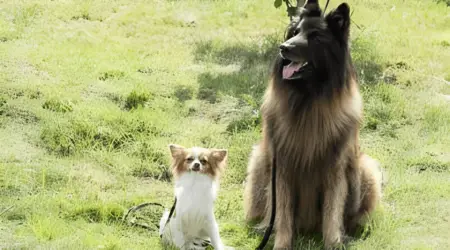


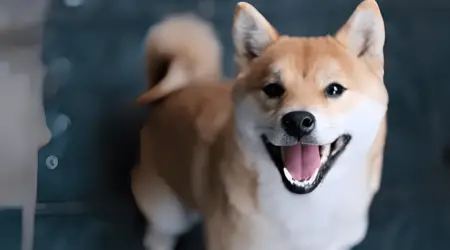
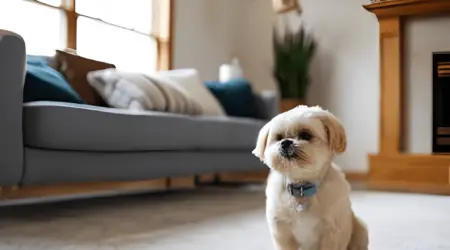
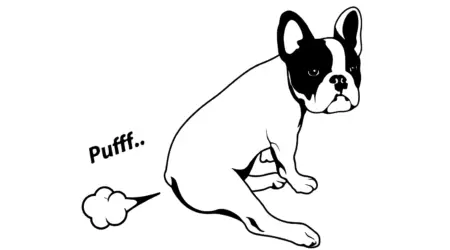
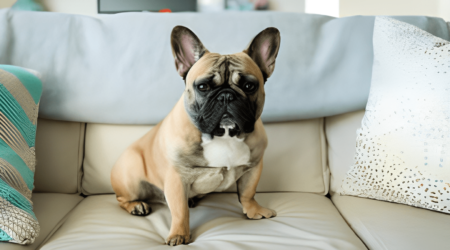
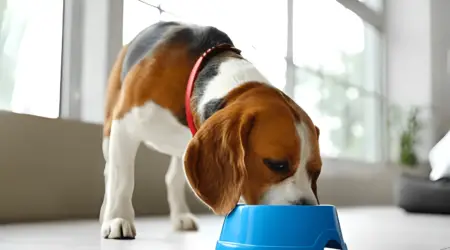

Leave a Reply